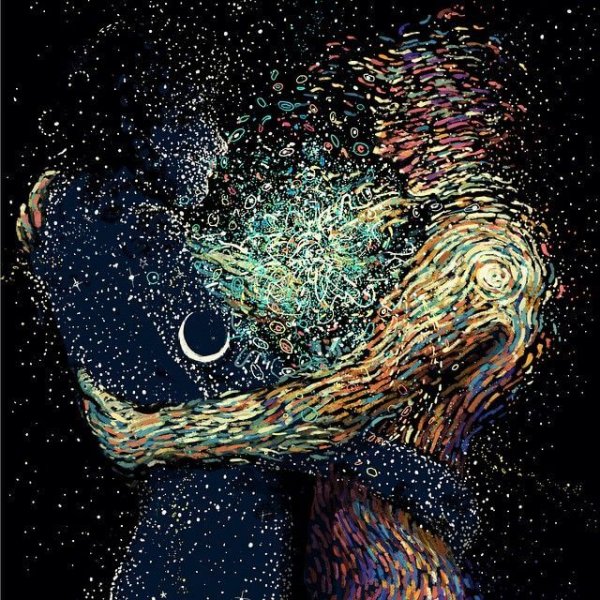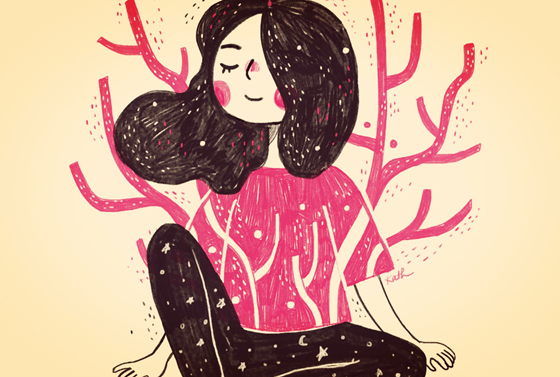When You Accept Your Polarities You Become More YOU

But what do we mean by polarities? When we say polarities we’re talking about the two opposite extremes of a spectrum. These extremes are natural opposites. If one is light, the other is dark. If one is passive, the other is active. When one is clear, the other is blurry.
On a more psychological level, we can see examples of polarity in pairs like these: sadness-happiness, euphoria-calmness, extroversion-introversion, femininity-masculinity. You could probably add to the list yourself.
And you’ve probably experienced each of these opposites too. Who hasn’t felt sad and happy? Who hasn’t been euphoric at some point even if they’re usually a calm person?
Even though culture is a big part of your polarities, they’re still inside of you
Polarities are about life in all its many forms. They’re about what life IS and what life GIVES. If there’s one thing in life, its opposite will be there too. Are you looking for light? Life will give you darkness too. Being able to see these polarities and how they influence us when we’re on one extreme or the other is part of growing as a person.
Culture, social norms, genes… these things sometimes silence and punish one side of the spectrum. One side of the polarity goes quiet. What that does is cut off part of who you really are, which usually keeps it from growing. It’s like a blade of grass that’s trying to grow tall, but keeps getting cut down. The energy it uses trying to grow is totally destroyed by the blade.

But the energy is still there. And if it doesn’t come out in a natural way, it will come out in unhealthier, more violent ways. That’s what happens with our polarities.
How many times have you surprised yourself by being aggressive and hurtful, even though you see yourself as a calm, patient person? How many times have you surprised yourself by being calm and peaceful, even though you see yourself as a nervous, easily agitated person?
Identifying yourself with just one side of the polarity means denying who you are
That’s your true genuine nature. You are both extremes. You are aggressive and gentle, you are calm and nervous. You are light and dark. We normally put ourselves on one side of the spectrum and firmly deny the other extreme’s existence. “I’m so calm, I never get angry!” “I’m very independent, I don’t need any help.”
And it’s then, when you deny part of your nature, that you harshly judge other people. If I can’t accept what I hate about myself and what society wants me to hate, I’ll see it and hate it in other people. But… not in me, because “that’s not me.” “Because I’m really calm and I never get angry.” But when I see it in other people it makes my blood boil.
We identify with the parts of ourselves we’re proud of, or the ones that our culture reinforces. Being a man and “being feminine” (or what society sees as feminine) is seen as strange in some cultures. But in other cultures it’s totally normal and completely natural.
If you accept your polarities instead of rejecting them, you’ll stop projecting
Once you’ve recognized your own extremes, you can accept them. When you accept them, you’ll stop projecting what you don’t like about yourself onto other people.
Even if other people do have it too, you can start to understand it without judging it. You’ll look at it calmly and without feeling upset. That’s because you won’t be projecting things you don’t like about yourself onto people anymore. You’ll just see them.

Work on being genuine. Accept your polarities. The more you accept yourself the less you’ll reject other people. The fewer biases you have, the freer you’ll be. If you accept yourself, you’ll be free to work on yourself from a place of self-love.
But what do we mean by polarities? When we say polarities we’re talking about the two opposite extremes of a spectrum. These extremes are natural opposites. If one is light, the other is dark. If one is passive, the other is active. When one is clear, the other is blurry.
On a more psychological level, we can see examples of polarity in pairs like these: sadness-happiness, euphoria-calmness, extroversion-introversion, femininity-masculinity. You could probably add to the list yourself.
And you’ve probably experienced each of these opposites too. Who hasn’t felt sad and happy? Who hasn’t been euphoric at some point even if they’re usually a calm person?
Even though culture is a big part of your polarities, they’re still inside of you
Polarities are about life in all its many forms. They’re about what life IS and what life GIVES. If there’s one thing in life, its opposite will be there too. Are you looking for light? Life will give you darkness too. Being able to see these polarities and how they influence us when we’re on one extreme or the other is part of growing as a person.
Culture, social norms, genes… these things sometimes silence and punish one side of the spectrum. One side of the polarity goes quiet. What that does is cut off part of who you really are, which usually keeps it from growing. It’s like a blade of grass that’s trying to grow tall, but keeps getting cut down. The energy it uses trying to grow is totally destroyed by the blade.

But the energy is still there. And if it doesn’t come out in a natural way, it will come out in unhealthier, more violent ways. That’s what happens with our polarities.
How many times have you surprised yourself by being aggressive and hurtful, even though you see yourself as a calm, patient person? How many times have you surprised yourself by being calm and peaceful, even though you see yourself as a nervous, easily agitated person?
Identifying yourself with just one side of the polarity means denying who you are
That’s your true genuine nature. You are both extremes. You are aggressive and gentle, you are calm and nervous. You are light and dark. We normally put ourselves on one side of the spectrum and firmly deny the other extreme’s existence. “I’m so calm, I never get angry!” “I’m very independent, I don’t need any help.”
And it’s then, when you deny part of your nature, that you harshly judge other people. If I can’t accept what I hate about myself and what society wants me to hate, I’ll see it and hate it in other people. But… not in me, because “that’s not me.” “Because I’m really calm and I never get angry.” But when I see it in other people it makes my blood boil.
We identify with the parts of ourselves we’re proud of, or the ones that our culture reinforces. Being a man and “being feminine” (or what society sees as feminine) is seen as strange in some cultures. But in other cultures it’s totally normal and completely natural.
If you accept your polarities instead of rejecting them, you’ll stop projecting
Once you’ve recognized your own extremes, you can accept them. When you accept them, you’ll stop projecting what you don’t like about yourself onto other people.
Even if other people do have it too, you can start to understand it without judging it. You’ll look at it calmly and without feeling upset. That’s because you won’t be projecting things you don’t like about yourself onto people anymore. You’ll just see them.

Work on being genuine. Accept your polarities. The more you accept yourself the less you’ll reject other people. The fewer biases you have, the freer you’ll be. If you accept yourself, you’ll be free to work on yourself from a place of self-love.
This text is provided for informational purposes only and does not replace consultation with a professional. If in doubt, consult your specialist.







